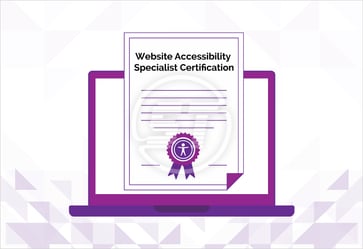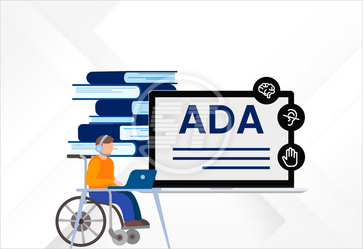In the fiercely competitive world of ecommerce, user experience (UX) and accessibility are no longer optional, they’re strategic levers for growth. While marketers aim to drive conversions, developers focus on functionality, and business owners look at the bottom line, all three roles intersect when it comes to creating a seamless and inclusive online shopping experience.
This article dives deep into how to conduct a comprehensive UX and accessibility audit, calculate its business impact, and embed inclusivity into the DNA of an ecommerce platform.
What is a UX and accessibility audit?
A UX audit evaluates how users interact with the website, identifying usability issues that affect the buyer journey, from browsing to checkout. It uncovers pain points like confusing navigation, slow load times, and friction in forms or CTAs.
An accessibility audit, on the other hand, focuses on how well a site serves people with disabilities. This includes users with visual, auditory, cognitive, and motor impairments. It measures compliance with accessibility standards like the WCAG 2.0, 2.1, 2.2, ADA (USA) or EN 301 549 (EU).
Together, these both audits ensure the platform is:
- Usable for everyone
- Accessible to people with diverse needs
- Optimized for conversions and customer satisfaction.
Why it matters?
For marketers:
- Larger reach: 1 in 5 people globally has a disability. Accessible design expands the audience.
- Better SEO: Search engines love accessible websites. Proper alt text, semantic HTML, and fast load times boost rankings.
- Improved conversions: An intuitive experience keeps users engaged and moves them toward purchase.
For developers:
- Code quality: Accessibility often means cleaner, semantic, standards-compliant code.
- Efficiency: Reusable, accessible components reduce tech debt and make future changes easier.
- Compliance: Avoid costly lawsuits by aligning with accessibility laws and guidelines.
For business owners:
- Risk management: Lawsuits over non-compliant websites are increasing.
- Brand loyalty: Inclusive businesses are perceived as ethical and trustworthy.
- Revenue impact: Better UX and accessibility can lead to higher conversion rates and customer retention.
Is conducting a UX and accessibility audit a complex process?
No, it’s not a complex process. However, a systematic planned process is crucial.
- Define goals and scope
Start by aligning all stakeholders:
- What are the most critical conversion points (such as product search, and checkout)?
- Web designs are made for which personas?
- What success metrics will businesses track (conversion rate, time on site, accessibility score)?
Tips for teams: Create shared documentation outlining current KPIs and audit expectations.
- Run automated tools for testing
Use top automated accessibility testing tools to get a baseline and catch low-hanging fruit.
UX tools:
- Google Lighthouse (built into Chrome DevTools): Provides performance, accessibility, SEO, and UX insights.
- Hotjar/Crazy Egg: Offers heatmaps and session recordings to visualize user behavior.
Accessibility tools:
- Website Accessibility Checker: Scans web page accessibility hurdles and provides suggestions to fix them.
- Axe DevTools: Chrome extension for detecting WCAG violations.
- WAVE: Highlights accessibility issues with visual indicators.
- SiteImprove: Enterprise-level audit with prioritization and reporting.
These tools help identify missing image alt text, poor color contrast, broken ARIA labels, confusing navigation paths, and slow-loading content or poorly optimized media.
- Conduct manual accessibility testing
Automated tools only catch a fraction of real-world issues. Manual accessibility audit bridges the gap.
Tasks to perform:
- Keyboard-only navigation: Can users browse the site using just the Tab, Enter, and arrow keys?
- Screen reader testing: Use NVDA (Windows) or VoiceOver (Mac) to hear how a site is read aloud.
- Color blindness simulations: Tools like Stark or Color Oracle simulate different types of vision impairment.
Developer Tip: Ensure semantic HTML (like using <button> instead of <div>) to support assistive technologies.
- Test with real users
Nothing beats feedback from real users, especially those relying on assistive technology.
How to do it:
- Recruit participants with disabilities for usability testing.
- Observe them navigating the site, where do they hesitate, get confused, or drop off?
- Ask open-ended questions: “Was anything confusing or frustrating?”
Marketer insight: You’ll uncover not only accessibility issues but also user expectations and buying behavior.
- Map against WCAG guidelines
Ensure the site aligns with the four WCAG principles: Perceivable, Operable, Understandable, and Robust (POUR).
Developer Note: Use ARIA roles and attributes wisely. Overuse or misuse can cause more harm than good.
How to calculate the impact of a user experience and accessibility audit?
After the audit and improvements, organizations should measure their business impact.
- Track UX metrics
- Conversion rate lift: Did more users complete purchases?
- Bounce rate drop: Are users staying longer and browsing more pages?
- Cart abandonment rate: Has it reduced since improving form fields or mobile navigation?
- Monitor accessibility scores
- Use tools to monitor before/after scores.
- Track how often users report issues post-fix.
- Evaluate business and legal outcomes
- Reduction in compliance or accessibility-related support tickets.
- Avoidance of legal risks or settlements.
- Enhanced brand sentiment in customer reviews and social media.
What are the tips to improve and sustain inclusivity?
- Integrate accessibility into design systems
Use accessible components, color palettes, and typography guidelines across projects.
- Train cross-functional teams
Marketers, designers, developers, and content writers should all understand accessibility basics.
- Adopt a “Shift Left” approach
Involve accessibility from the planning and design phase, not as a patch after launch.
- Use inclusive language
Avoid jargon or cultural references that may not resonate with diverse users.
- Schedule regular audits
Technology and standards evolve. Regular testing ensures ongoing compliance and improvement.
In a nutshell,
A seamless, accessible ecommerce experience is a shared responsibility. Marketers need to ensure messaging reaches all audiences. Developers must code with empathy and precision. Business owners should prioritize accessibility as part of their growth and risk mitigation strategy.
Ultimately, designing for inclusion isn’t about meeting minimum standards, it’s about exceeding user expectations and opening businesses’ digital doors to everyone.
Ready to uncover hidden accessibility gaps and create a seamless online experience for everyone? Skynet Technologies offers expert manual accessibility audit and a complete website accessibility remediation services including document / pdf remediation, monitoring, support, maintenance, VPAT / ACR for ecommerce businesses. Our team helps to identify UX barriers, address compliance issues, and implement meaningful improvements that boost inclusivity and conversions. Reach out [email protected] to schedule ecommerce accessibility audit and take the next step toward a more accessible, customer-friendly store.


